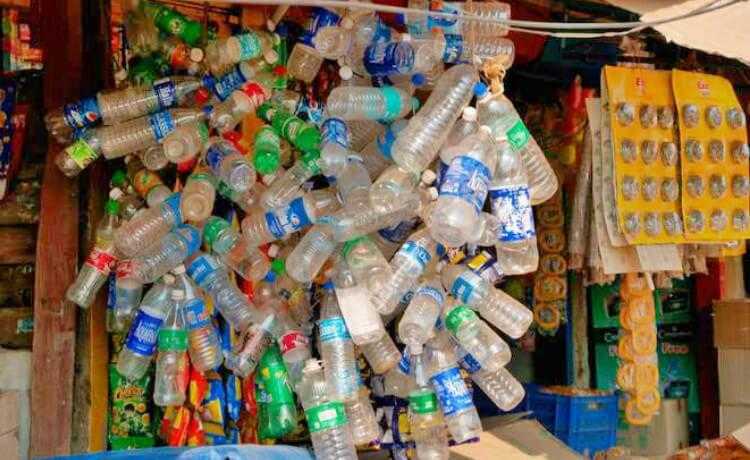Processed meat: what is it, what are its health risks and environmental impacts?
According to evidence, consumption of processed meat may even increase the risk of cancer

Image of Edi Libedinsky in Unsplash
In recent decades, with the busy life of large cities, processed meat has gained space on the population's menu. Many people appreciate the flavor, variety and convenience that this type of meat can offer. But everything has its downside and, in this case, it is quite extensive.
1. What are processed meats?
According to ancient history, meat processing has its roots in the salting and smoking of food, which began centuries before the practice of refrigeration, which is widely available today. The main objective of these processes was to conserve meat for a longer period, in order to guarantee consumption during periods of food shortage.
Simply put, processed meat is a fresh product (usually made from beef, pork, chicken and turkey) that has been altered from its original state, undergoing one (or more) transformation phase or elaboration (such as grinding, adding ingredients and additives, cooking, among other processes).
What changes the appearance, texture and flavor, increases the “shelf life” of processed meat, provides practicality (one of the main characteristics sought by the consumer at the time of purchase), among other technological aspects that aim to increase consumer acceptance.
The main examples of processed meat and its derivatives on the market are: piece meat, seasoned meat, jerky (dried meat), ham, mortadella, sausages, sausages, salami, pates, canned meat, concentrated meat broth, among others ( see more here).
2. How is processing performed?
Animal tissues, mainly muscle meat and fat, are the main ingredients used in processing. Occasionally other animal tissues are also used, such as internal organs, skin and blood or ingredients of plant origin, according to information from the FAO, the UN arm that deals with issues related to agriculture and food.
Food transformations are carried out through physical, chemical and/or biological treatments. Examples are milling and mixing, curing, smoking, cooking, fermenting, drying or dehydrating, among others (see these and more processes).
The type of processing varies between meat products, and the more processed the product is, the more it loses its nutritional characteristics, and the more it increases the risks of possible damage to health, when compared to products in nature. Next, the processing levels that a product can undergo will be presented.- What are fresh, processed and ultra-processed foods
Minimally processed products
Pieces of meat that do not involve the addition of salt, sugar, oils, fats and other substances, and are sold in butchers, supermarkets or open markets; they can be found fresh, chilled or frozen. They include beef, pork, poultry and fish.
processed products
Processed meat is manufactured by the industry with the addition of salt, sugar or other culinary substances to the meat in nature to make them durable and more palatable. This group includes dried meat, bacon, canned sardines and tuna, among other meat products.
Ultra-processed products
Ultra-processed foods are industrial formulations made entirely or mainly from substances extracted from foods, derived from food constituents or synthesized in a laboratory based on organic materials such as oil and coal. This group includes hamburgers, meat and chicken extracts, fish and breaded chickens of the type nuggets, sausages and other sausages.
3. Health risks
During meat processing, it is necessary to consider that there are several risks that can affect the consumer's health. Therefore, when buying a meat product, check if it has the seal of the official inspection agency, the Ministry of Agriculture, Livestock and Supply (Map), and the Regulation of Industrial and Sanitary Inspection of Animal Origin Products (Riispoa), which guarantees the food safety of the product. Some examples are:
- Biological hazards, where pathogenic microorganisms (especially bacteria and fungi) can cause disease and food poisoning.
- Physical hazards, which can be caused by the remains of unwanted materials (glass, bone fragments, animal teeth - in the case of meat from the processing head, metal fragments such as sausage clips, broken knife blades, needles, plastics, stones).
- Chemical hazards, which are contaminants (heavy metals, PCBs, chemical solvents, cleaning and disinfecting compounds), residues (veterinary drugs, food additives, pesticides), and food additives that can be very dangerous (nitrate, nitrite , chemical preservatives).
All these processes are common to processed foods, but some are more common when it comes to processed meat, especially physical and chemical risks.
In processed meat, there is a large amount of fragments that would no longer be used by the meat industry, containing a high concentration of fat.
As meat is perishable, it needs substances that prolong its shelf life to be marketed and consumed before it spoils. But compounds that are used to give this survival to meat are nitrites and nitrates, included in the item's curing process.
The problem is that, under certain conditions, according to research, nitrite and nitrate (possibly carcinogenic substances for humans, according to the International Agency for Research on Cancer - Iarc, its acronym in English - see more) can form nitrosamines - carcinogenic chemical compounds in animals. This is precisely the case with heavily cooked or fried meat products that have been previously cured with nitrite or nitrate. Again according to Iarc, nitrites and nitrates in food are associated with an increased incidence of stomach cancer.
- Nitrites and Nitrates in Food and Possible Health Risks
4. Is processed meat carcinogenic?
According to Iarc, linked to the World Health Organization (WHO), yes, processed meats are carcinogenic. A risk assessment of red and processed meat consumption concluded and classified processed meat as carcinogenic to humans (group 1). Products such as tobacco, alcohol and asbestos are located in the same risk group.
The evidence is sufficient to affirm that consumption of this type of food causes colorectal cancer. A daily intake of a 50-gram serving of processed meat increases the risk of colorectal cancer by 18%, according to Iarc experts who carried out the assessment. Furthermore, the risk increases with the amount of meat consumed.
Recent estimates made by Global Burden of Disease Project, an independent academic research organization, point out that approximately 34,000 deaths a year are caused by cancer from diets high in processed meat.
Experts have yet to fully unravel how cancer risk is influenced by processed meat and red meat (the latter was classified in Group 2A - probably carcinogenic to humans). However, it is known that, during processing, carcinogenic chemicals such as N-nitrous and polycyclic aromatic hydrocarbons form. In the cooking process, polycyclic aromatics are also formed, which are even present in air pollution. The carcinogenic potential of some of these chemicals is proven and others are classified as likely to be carcinogenic (see Iarc answers on other common questions regarding the risks of ingesting these foods).
To Dr. Kurt Straif, leader of the Iarc Monographs Program, the incidence of cancer caused by the consumption of processed meat is a public health issue. The organization's director, Christopher Wild, also says that these findings indicate the need for recommendations on limiting meat consumption.
5. Why put nitrite in meat?
Nitrite inhibits the germination of Clostridium botulinum and prevents the formation of toxins in cured meat products, thus preventing food poisoning from botulism, which can be lethal or cause irreversible sequelae if not diagnosed and treated quickly. It is assumed that the minimum concentration of nitrite necessary to inhibit the C. botulinum is 150 parts per million (ppm) (see more here).
6. Natural alternatives to cured
According to American Meat InstituteSome consumers prefer meats that are cured using natural nitrate and nitrite sources found in plant extracts such as celery powder. These products are increasingly available in supermarkets. The United States Department of Agriculture (USDA) requires that the packaging of these products declare: "uncured", and in a smaller font on the labeling state that "there are no added nitrates or nitrites, except for those that occur naturally in celery in powder".
Other alternatives to saltpeter (sodium nitrate salts or potassium nitrate) are sea salt and beet juice.
7. Impacts and environmental aspects
In addition to the risks mentioned above, it is important to consider that in all stages of meat processing, as well as in various industries in the food sector, the main environmental aspects and impacts resulting from the production processes are the high consumption of water, the generation of effluents. liquids with a high polluting load, mainly organic, and high energy consumption. In the case of meat production, atmospheric emissions are exorbitant, in addition to the generation of solid waste and noise, which are quite significant.
For all these reasons, it is recommended not to consume processed meat, preferring a vegetarian diet, which also avoids animal suffering. You can start small... Check out the article "How to be a vegetarian: 12 must-see tips".










